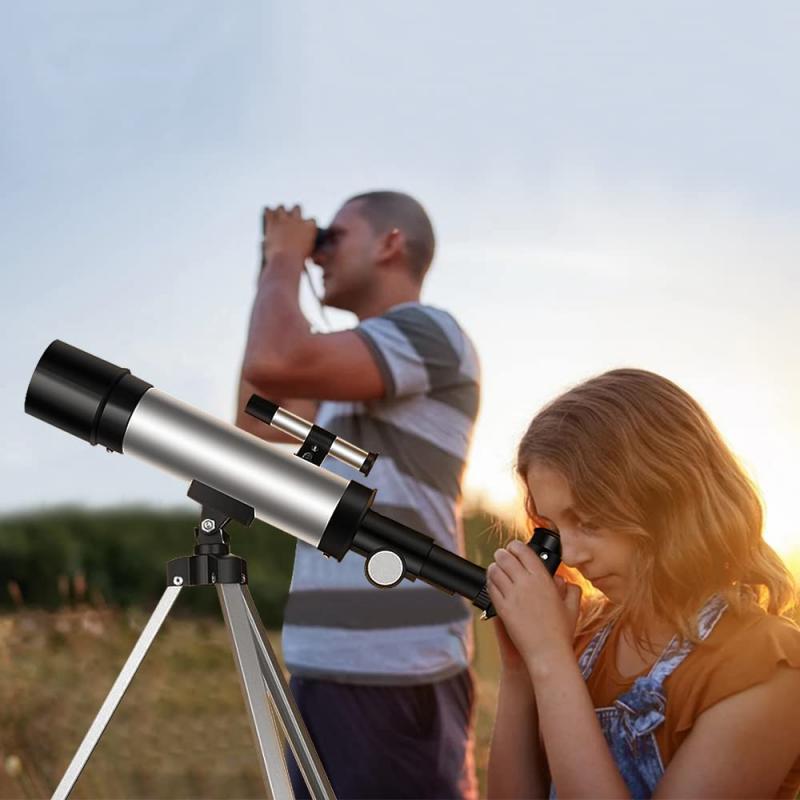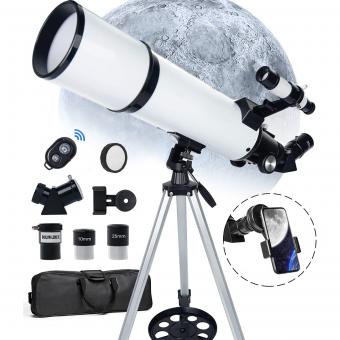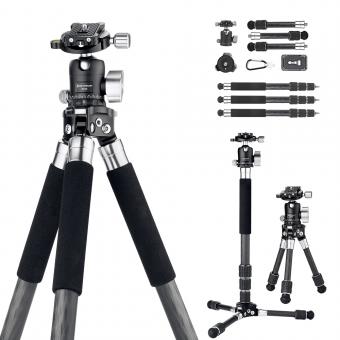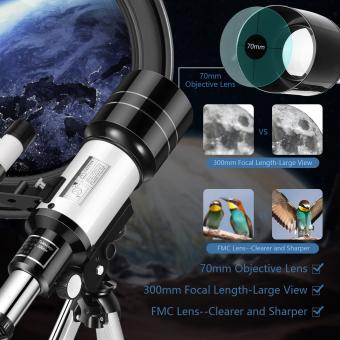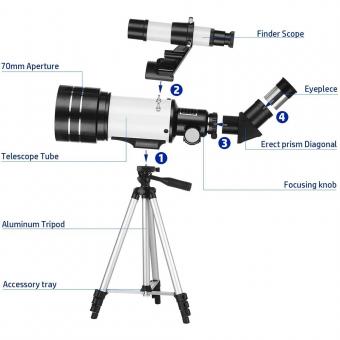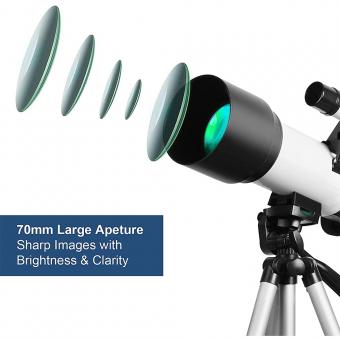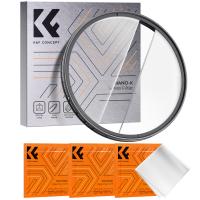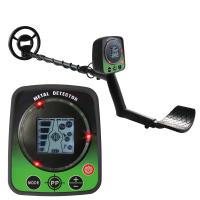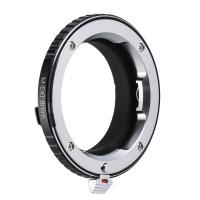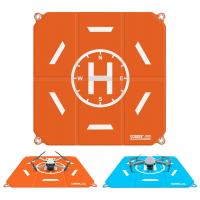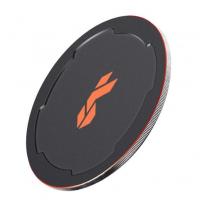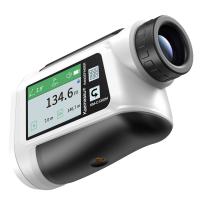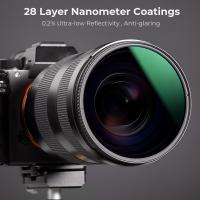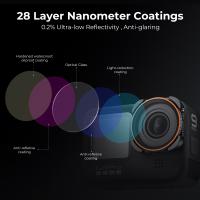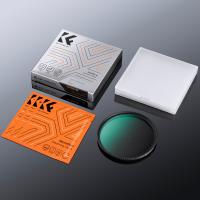How To Use A Telescope For Beginners ?
To use a telescope for beginners, start by setting it up on a stable surface or tripod. Align the finder scope with the main telescope by pointing it at a distant object. Use the lowest magnification eyepiece to locate and focus on a bright object like the moon or a planet. Adjust the focus until the object appears sharp and clear. Experiment with different eyepieces to vary the magnification. To track objects in the sky, use slow and smooth movements to adjust the telescope's position. It's also helpful to learn about the night sky and use star charts or smartphone apps to locate interesting celestial objects. Practice and patience are key to mastering telescope usage.
1、 Telescope Types: Refractor, Reflector, Compound - Pros and Cons
Telescope Types: Refractor, Reflector, Compound - Pros and Cons
Telescopes are fascinating tools that allow us to explore the wonders of the universe. If you're a beginner looking to delve into the world of stargazing, it's important to understand the different types of telescopes available and their pros and cons. This knowledge will help you make an informed decision when purchasing your first telescope.
1. Refractor Telescopes: These telescopes use lenses to gather and focus light. They are known for their crisp and clear images, making them ideal for observing the moon, planets, and bright deep-sky objects. Refractors are easy to use and require minimal maintenance. However, they tend to be more expensive and have a limited field of view.
2. Reflector Telescopes: Reflectors use mirrors to gather and focus light. They offer a larger aperture at a lower cost compared to refractors, making them great for observing faint deep-sky objects. Reflectors are versatile and can provide a wide field of view. However, they require occasional collimation (alignment of mirrors) and may introduce some optical aberrations.
3. Compound Telescopes: Also known as catadioptric telescopes, these combine lenses and mirrors to gather and focus light. Compound telescopes offer a compact design and are highly portable. They provide a good balance between image quality and versatility. However, they can be more expensive than reflectors and may have a narrower field of view.
When using a telescope for the first time, it's important to familiarize yourself with its components and operation. Start by setting up the telescope on a stable surface and aligning it with a distant object during the daytime. This will help you practice focusing and tracking objects. Additionally, consider investing in a beginner-friendly star chart or smartphone app to help you locate celestial objects.
Remember, patience and practice are key when using a telescope. Take your time to learn about the night sky and experiment with different eyepieces and filters to enhance your viewing experience. Happy stargazing!
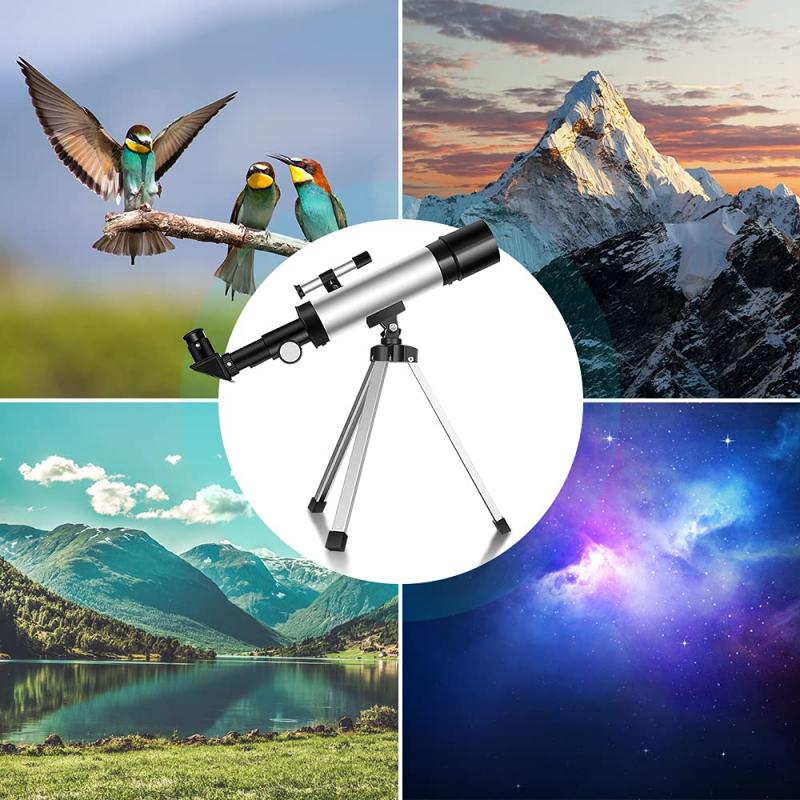
2、 Telescope Setup: Mounting, Balancing, and Aligning
Telescope Setup: Mounting, Balancing, and Aligning
Using a telescope for the first time can be an exciting and rewarding experience. However, it is important to properly set up and align your telescope to ensure optimal viewing. Here is a beginner's guide to telescope setup:
1. Mounting: Start by assembling the tripod and attaching the mount. Make sure the tripod is stable and level. Then, attach the telescope tube to the mount, ensuring it is securely fastened.
2. Balancing: Properly balancing your telescope is crucial for smooth and accurate movement. Adjust the counterweights on the mount until the telescope remains in position when you let go. This will prevent strain on the mount and allow for easier tracking of celestial objects.
3. Aligning: Aligning your telescope is essential for accurate pointing. Most modern telescopes have a built-in alignment process. Follow the manufacturer's instructions to align the telescope with two or three bright stars or other reference points in the sky. This will help the telescope accurately track objects as they move across the sky.
4. Latest Point of View: In recent years, there have been advancements in telescope technology that simplify the setup process. Some telescopes now come with computerized mounts that can automatically align and track celestial objects. These computerized telescopes often have built-in databases of objects, making it easier for beginners to locate and observe specific targets.
Remember, practice makes perfect. It may take some time to become familiar with your telescope and its features. Start by observing the moon and other bright objects before moving on to more challenging targets. With patience and practice, you will soon be exploring the wonders of the night sky with your telescope.
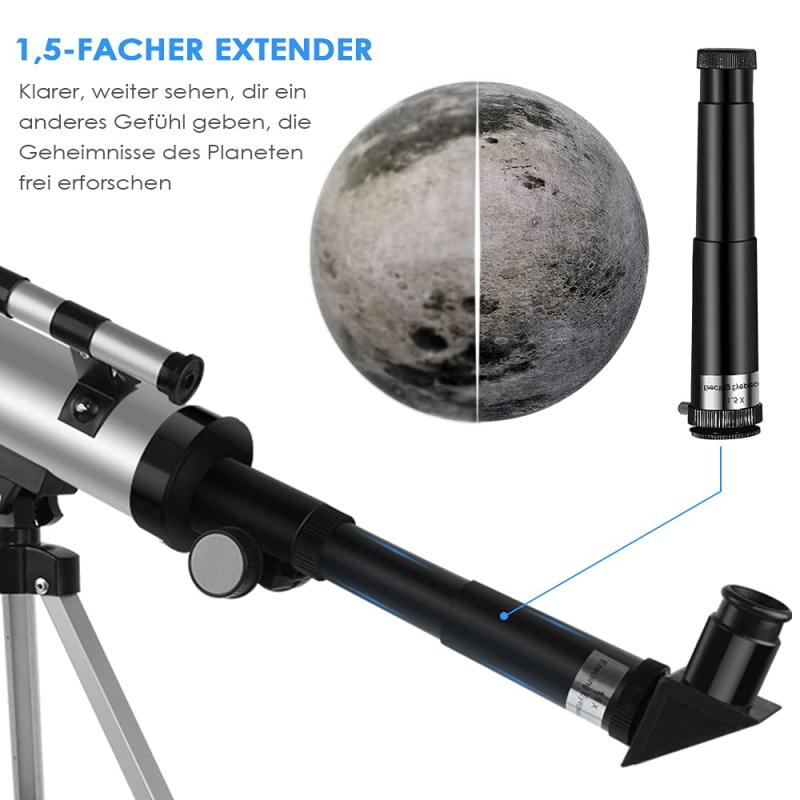
3、 Observing Techniques: Focusing, Tracking, and Finding Celestial Objects
Observing Techniques: Focusing, Tracking, and Finding Celestial Objects
Using a telescope for the first time can be an exciting and rewarding experience. To make the most of your observations, it is important to understand the basic techniques of focusing, tracking, and finding celestial objects. Here is a beginner's guide to help you get started:
1. Setting up the Telescope: Begin by assembling your telescope according to the manufacturer's instructions. Ensure that it is stable and properly aligned.
2. Focusing: Start by focusing on a distant terrestrial object during the day. Adjust the focus knob until the image appears sharp and clear. This will help you understand how the focus mechanism works before attempting to observe celestial objects.
3. Tracking: Once you have focused your telescope, you will need to track celestial objects as they move across the sky. Many telescopes come with motorized mounts that automatically track objects. If your telescope does not have this feature, you can manually adjust the telescope's position to keep the object in view.
4. Finding Celestial Objects: Begin by observing bright and easily recognizable objects such as the Moon or planets. Use star charts or smartphone apps to locate these objects in the night sky. Gradually, you can move on to more challenging targets such as star clusters, nebulae, and galaxies.
5. Latest Point of View: With advancements in technology, there are now numerous smartphone apps available that can help beginners locate celestial objects. These apps use GPS and augmented reality to guide you to specific targets in the night sky. Additionally, online communities and forums provide valuable information and tips for beginners, allowing you to learn from experienced astronomers.
Remember, patience and practice are key when using a telescope. It may take time to become familiar with the equipment and develop your observing skills. Enjoy the journey of exploring the wonders of the universe!
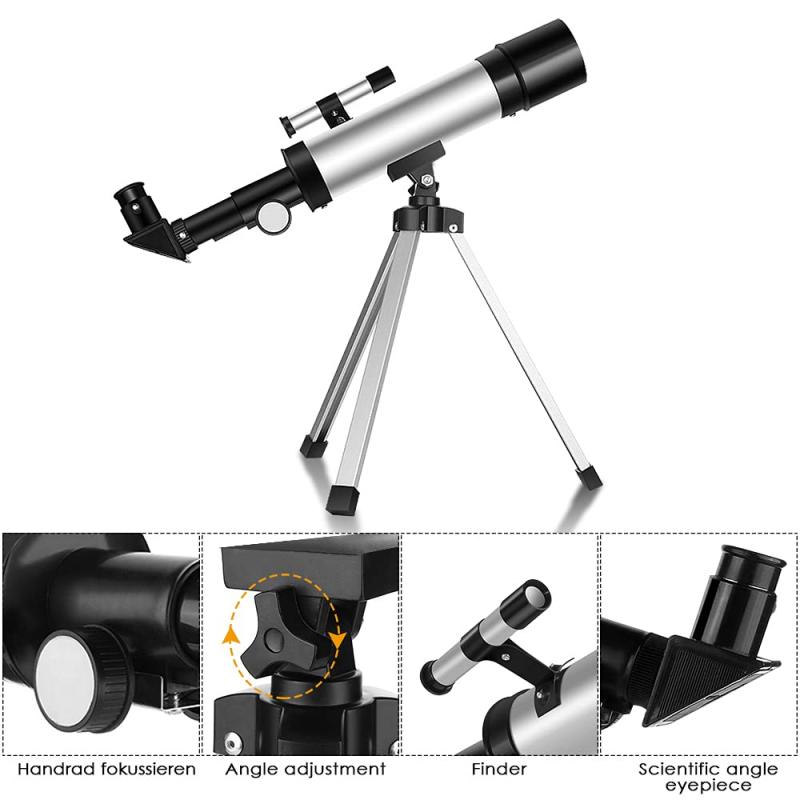
4、 Telescope Maintenance: Cleaning Optics and Proper Storage
Telescope Maintenance: Cleaning Optics and Proper Storage
Telescopes are incredible tools that allow us to explore the wonders of the universe. However, like any other instrument, they require regular maintenance to ensure optimal performance and longevity. In this guide, we will discuss two essential aspects of telescope maintenance: cleaning optics and proper storage.
Cleaning Optics:
1. Start by using a soft brush or compressed air to remove any loose dust or debris from the telescope's lenses and mirrors. Avoid touching the optics with your fingers as it can leave smudges or scratches.
2. If there are stubborn stains or fingerprints, use a lens cleaning solution specifically designed for optics. Apply a small amount of the solution to a microfiber cloth and gently wipe the surface in a circular motion. Avoid excessive pressure.
3. For more delicate optics, such as eyepieces, use a lens pen or a soft brush to remove dust. Be cautious not to apply too much pressure or use any cleaning solution directly on the eyepiece.
4. Never disassemble the telescope's optics unless you have the necessary expertise. It is best to leave complex cleaning procedures to professionals.
Proper Storage:
1. Always store your telescope in a clean and dry environment to prevent dust and moisture buildup. A protective case or bag can help shield it from potential damage.
2. Cover the telescope with a dust cap or lens cover when not in use to protect the optics from dust and accidental damage.
3. If possible, store the telescope in a temperature-controlled area to avoid extreme temperature fluctuations, which can affect the optics' performance.
4. Regularly check and tighten any loose screws or fittings to ensure the telescope remains stable and aligned.
It is important to note that telescope maintenance practices may vary depending on the type and model of the telescope. Always refer to the manufacturer's instructions for specific guidelines.
In recent years, there has been a growing emphasis on using environmentally friendly cleaning solutions for telescope optics. Many manufacturers now offer eco-friendly options that are safe for both the optics and the environment. Additionally, advancements in lens coating technology have made some optics more resistant to smudges and easier to clean.
By following these maintenance practices, beginners can ensure that their telescopes provide clear and crisp views of the night sky for years to come. Regular cleaning and proper storage will not only enhance the telescope's performance but also protect your investment in this fascinating hobby.
